Gluten Free Challah, or the-most-beautiful-braided-bread-ever, or egg bread or Shabbat Bread, Bread for Hannukah or Rosh Hashanah or even Easter … whatever you call it and for whatever occasion you bake it, it’s a true treat, with or without apples and raisins.
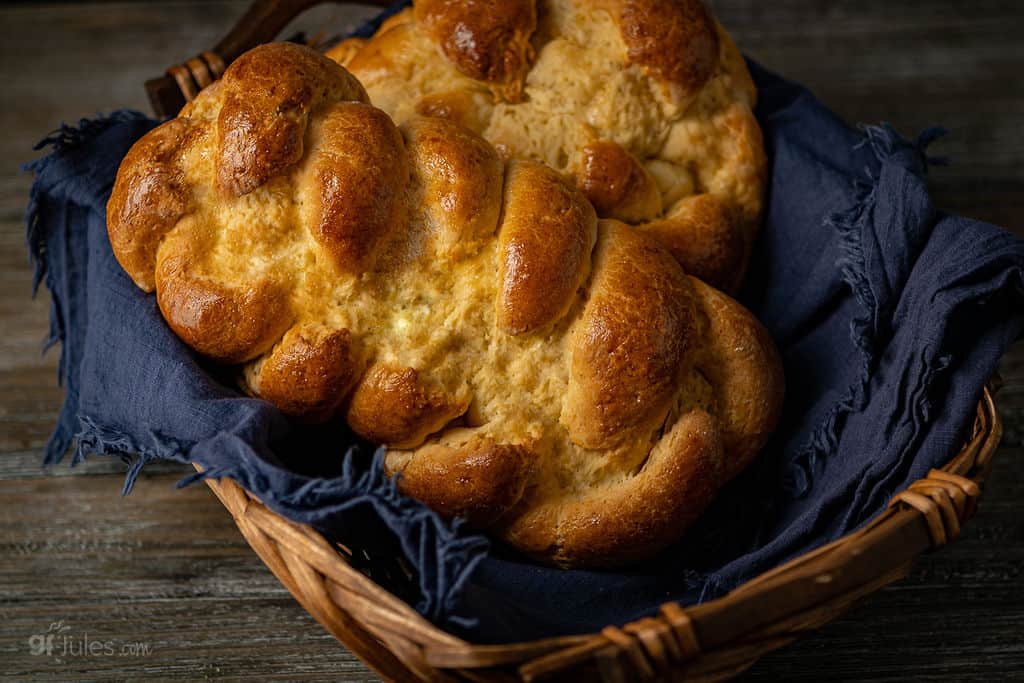
Even if you’ve never made homemade bread or if you’ve never braided bread dough, this recipe will make you look like a super star in the kitchen! The dough is soft and easy to work with when made with my gfJules Flour, and you can braid or shape it (or not!) however you like!
Some folks braid it like so …
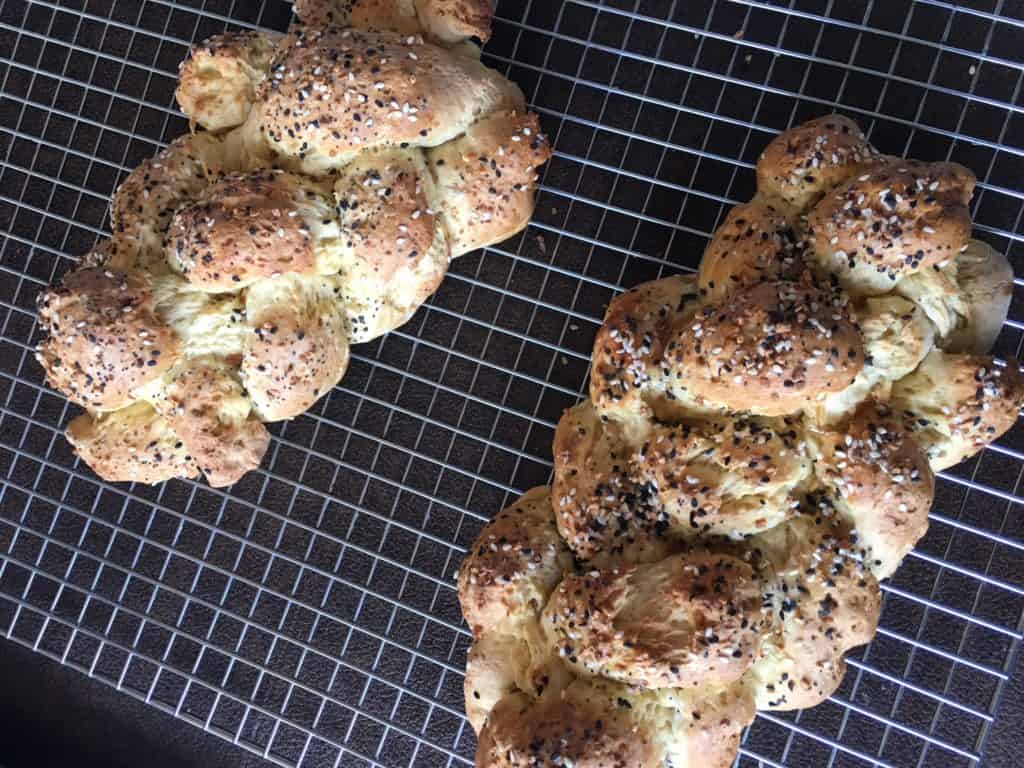
Others bake it into crown shapes or even bake off in muffin or popover tins for individual rolls.
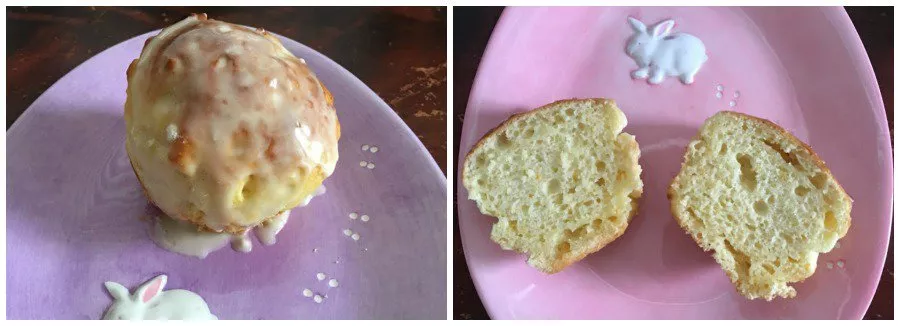
Gluten free challah this good is great any time. Why wait for the next Jewish holiday or even for Friday? You can even prep this dough and refrigerate it overnight to bake the next day!
Just gather your ingredients … make sure the liquids are at room temperature.

Mix your dough then transfer it to your bench or clean counter dusted with gfJules gluten free flour to keep it from sticking.
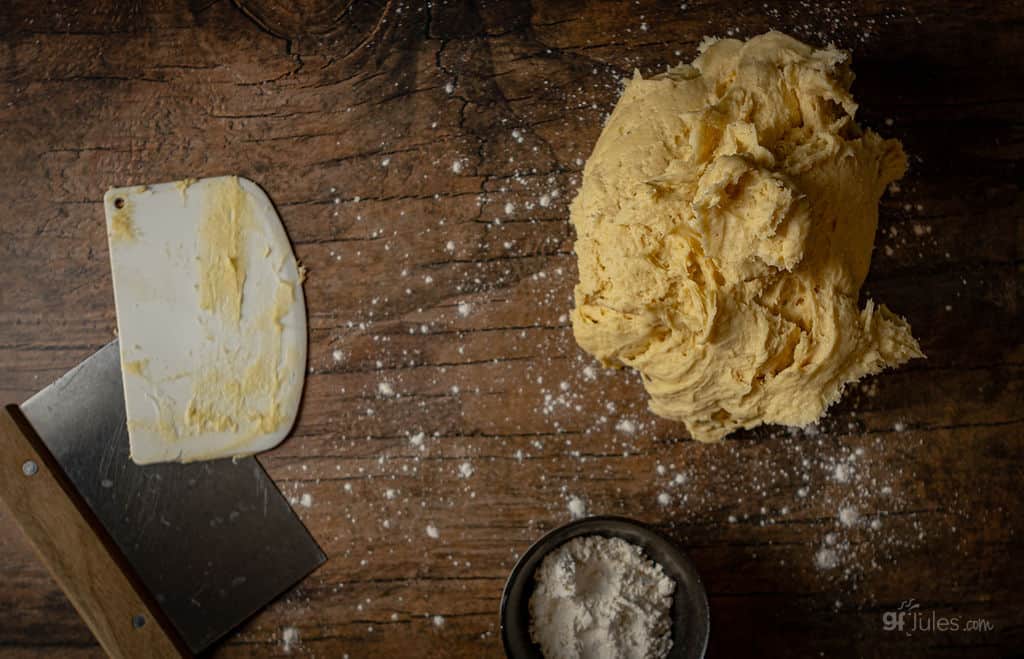
Then divide it into balls — 6 equal balls for 2 loaves with 3 strands each. Then channel your inner child and hearken back to your playdough days. This is where it gets fun! Start rolling, not pressing, but gently rolling out each ball into long strands of dough that can be braided. Watch my video below for more instructional detail.

Each strand will then be braided and finished at each end by scoring with a fork, wetted with a finger dipped in water and then pressed gently to seal together and smoothed.
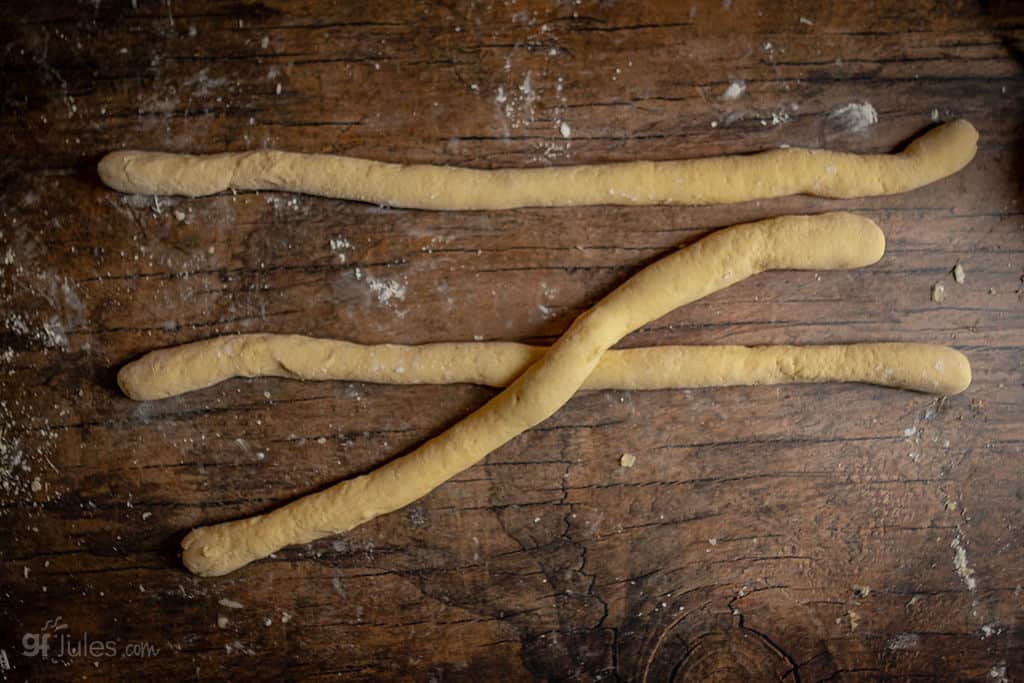
Brush with egg wash before rising and baking.
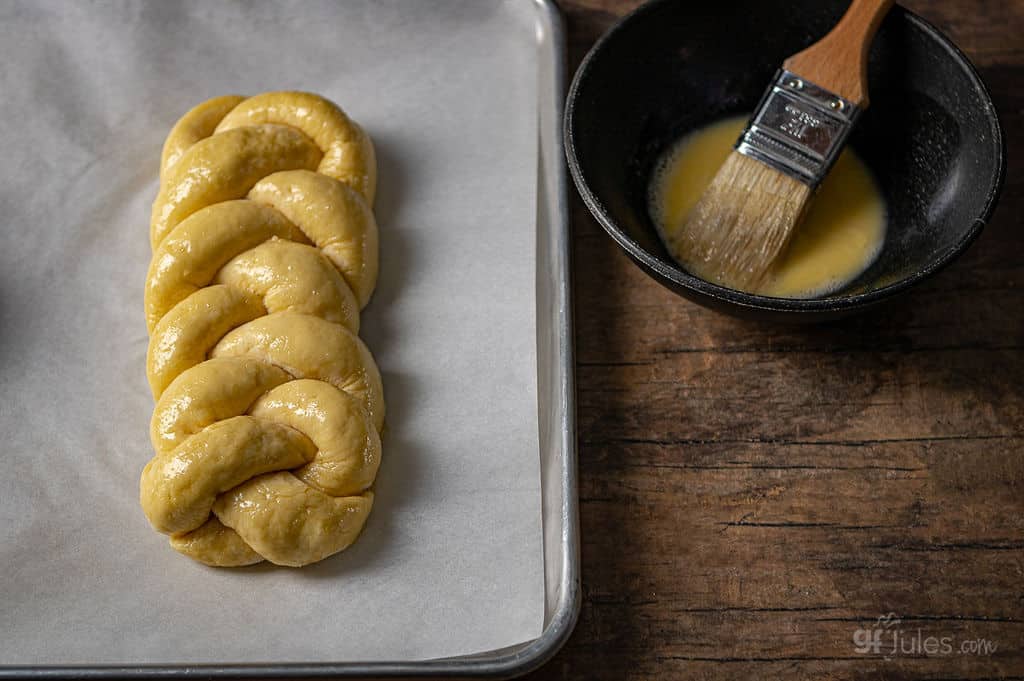
If you like, you can also add raisins and apples once the braid is finished and transferred to a parchment-lined baking sheet.
Allow the bread dough to rise for 20 minutes, brush with another egg wash or spritz lightly with water, then bake OR cover with plastic wrap and refrigerate to bake the next day.

The next day, remove the tray to the counter while you preheat your oven and then bake. Voila! Amazing bread!
NOTE: don’t allow the gluten free challah to rise even more the next day, or you’ll lose some of the definition in the braids. It still tastes delicious, of course, but wasn’t quite as pretty because it rose TOO much and actually ended up being flatter than if it had been popped into the oven with just the right amount of rise.
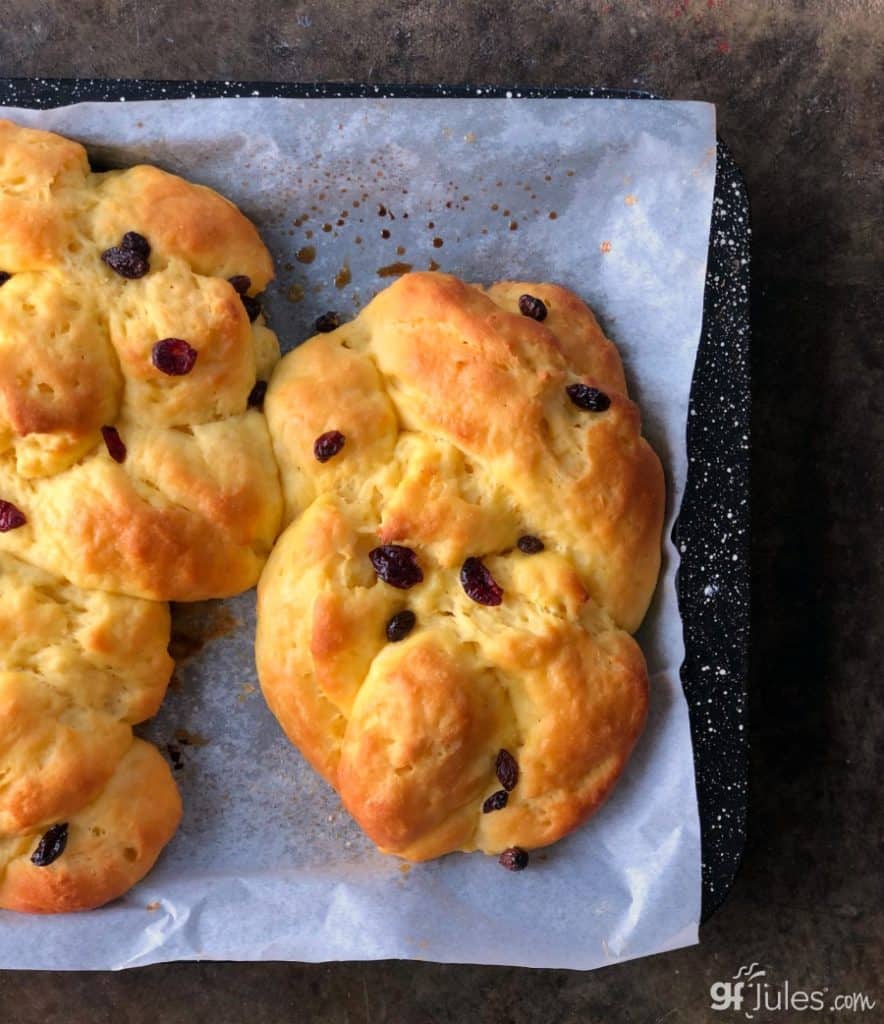
It’s a wonderful treat for anyone at any time of year, especially now that you have this wonderful gluten free version to make and enjoy!
In fact, it’s not only a truly delicious bread, it’s also one that will impress any guest or crowd. The braids merely look like it took a skillful baker to weave, but that can be our little secret.
When made with my gfJules Flour, these braids will be such a nice surprise to work with!
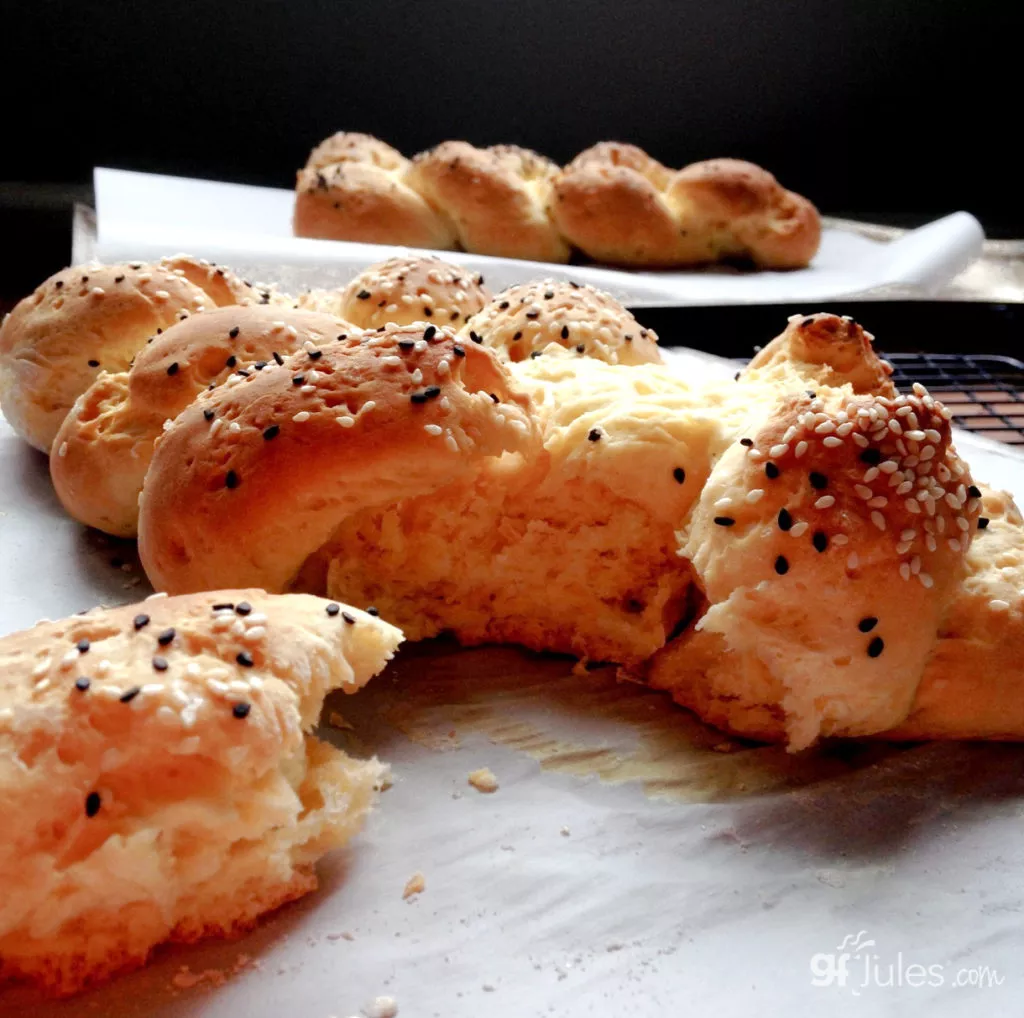
The dough will be unlike any gluten free dough you’ve worked with before — soft and pliable, not at all brittle. Make sure you follow my directions and ingredients exactly, so you can expect these same results.
The dough should not resist when you’re working with it, but it shouldn’t be super wet either. You’ll get the hang of it after working with it.
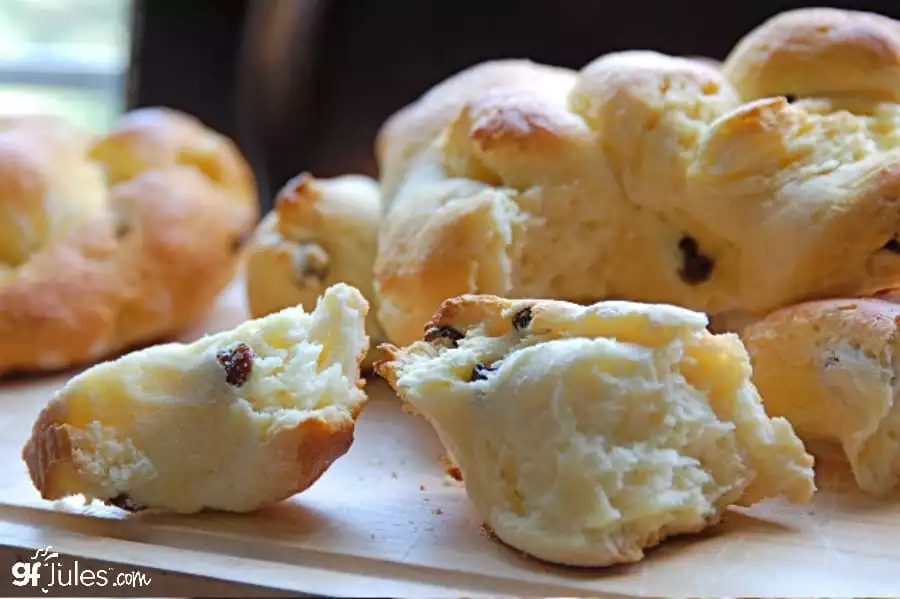
You’ll be making beautiful gluten- and dairy-free challah that will have everyone marveling at your baking prowess!
And it’s not just pretty to look at — it’s a wonderful bread to tear apart and enjoy in any setting and with any meal, or on its own.
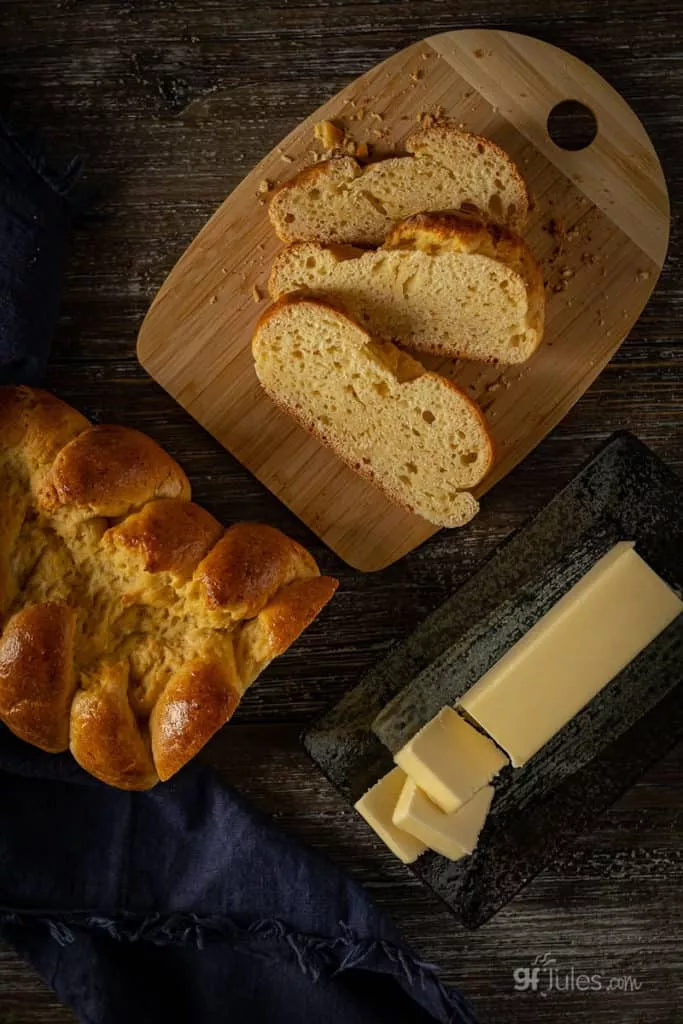
See how flexible this dough is in this quick time lapse how-to video on braiding bread.
Feel free to skip the apples and raisins, or add your own toppings like sesame seeds and sea salt (as pictured below). Or braid into a crown!
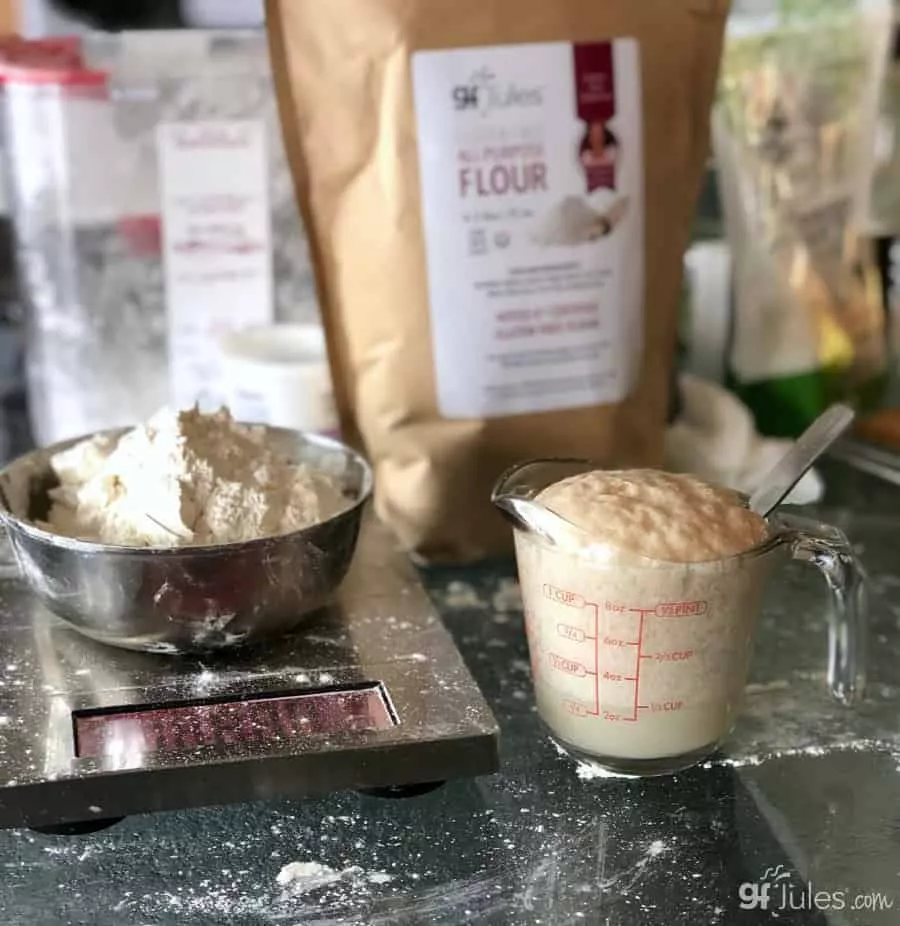
To recap: just proof your yeast, measure your ingredients, make the dough, braid, rise and bake!
The eggs in this bread help to keep it moist and fresh for days, thus, on the off-chance there are any leftovers, enjoy it with hummus, peanut butter, high quality honey, or plain (or make French Toast or overnight gluten free French Toast Casserole!).
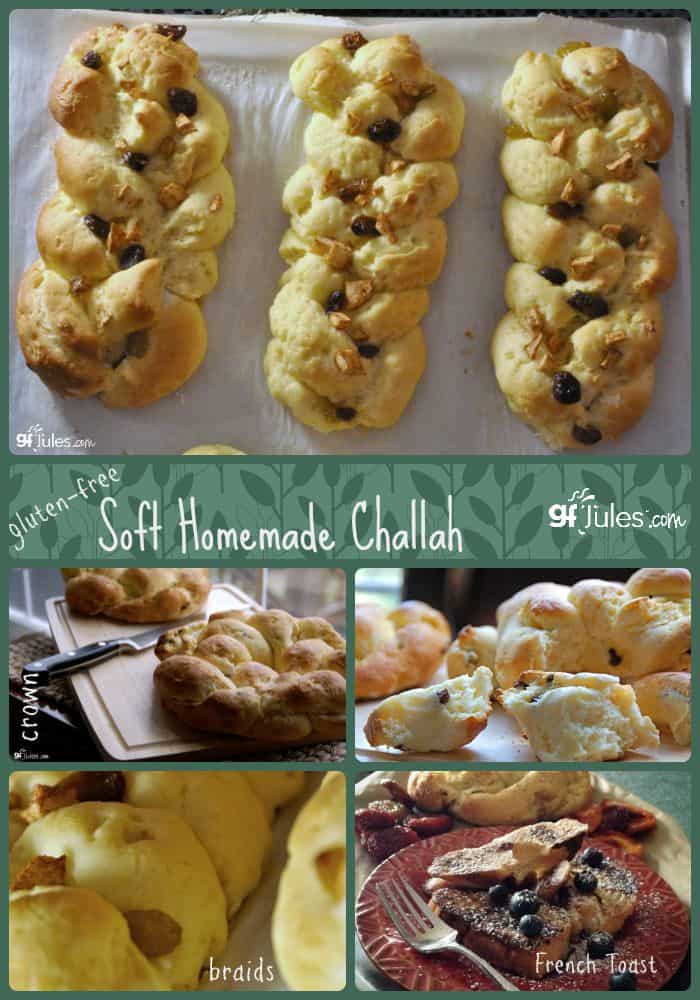
Fitting that it is the manna that just keeps giving! Enjoy this recipe for the gift that it is — there’s just nothing like soft, fresh baked bread, and it means so much to be able to enjoy the best bread, gluten free!
It is truly one of the most gorgeous and delicious breads you can make and bring to share for any occasion, so why wait?
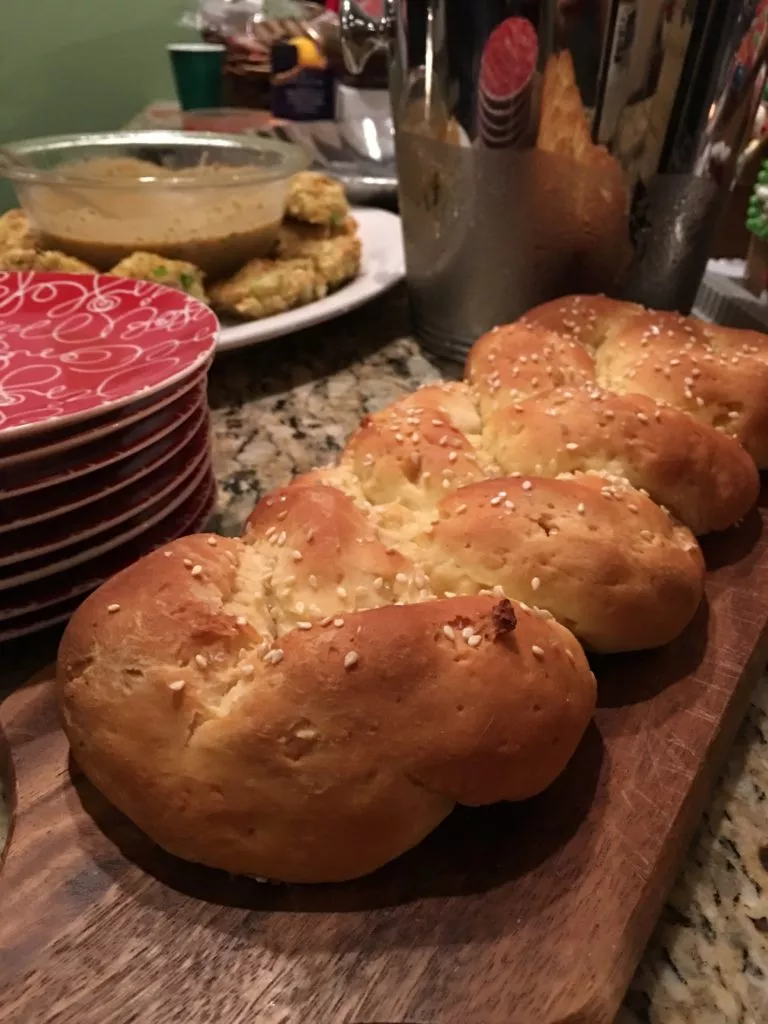
A lot of readers ask if they can use my gfJules Gluten Free Bread Mix instead of my gfJules Flour to make this gluten free Challah recipe, so I’ve retooled the recipe to make it possible to make this recipe from the mix as well.
Just follow the recipe card below this one if you have my gfJules Gluten Free Bread Mix and want to make gluten free Challah with my gluten free bread mix instead!
Gluten Free Challah Braid

Gluten Free Challah Braid
Ingredients
Gluten Free Challah Ingredients
- 3/4 cup warm water
- 1 Tbs. gluten free active dry yeast (Fleishmann's® or Red Star® - NOT platinum)
- 1 tsp. granulated cane sugar
- 1 cup yogurt of choice (not Greek style), room temperature (I like vanilla flavor) (So Delicious® Vanilla Coconut Yogurt* - (I like vanilla flavor, but plain is fine)
- 1 tsp. apple cider vinegar
- 5 large egg yolks at room temperature (slightly mixed)**
- 1/3 cup safflower oil OR sunflower oil OR non-GMO canola oil OR other mild oil like avocado
- 4 Tbs. honey OR agave nectar OR maple syrup
- 4 cups (540 grams) gfJules® All-Purpose Gluten Free Flour
- 1 Tbs. psyllium husk powder (OPTIONAL) if using, add 2 Tbs water to dough
- 3 Tbs. + 2 tsp. granulated cane sugar
- 1 1/4 tsp. kosher salt
Toppings
- 1 large egg mixed with 1 Tbs. water
- poppy seeds sesame seeds, raisins, diced apples or other toppings (optional)
Instructions
- Preheat your oven to 200º F, then turn it off. Prepare a baking sheet by lining it with parchment paper.
- In a small bowl, divide out ~1/3 cup of the total 3/4 cup warm water. Add to it the yeast and 1 teaspoon of sugar to proof the yeast; set aside. (If using quick rise/rapid rise yeast, you may simply add to dry ingredients instead.)
- In the bowl of your stand mixer***, add the rest of the wet ingredients (remaining water, yogurt, cider vinegar, egg yolks, oil, honey) and mix until combined.
- Whisk together the dry ingredients in a separate bowl (gfJules Flour; remaining sugar; salt; and psyllium -- if using).
- If proofing yeast, after 5 minutes of proofing, stir in the bubbling yeast-water mixture into the wet ingredients (note: if your yeast isn’t bubbling at this point, throw it out and start again with fresh yeast).
- Gradually stir the dry ingredients into the wet until fully integrated, adding more warm water by the tablespoon if needed so that the dough is not tight or stiff — you should be able to pull the dough gently without it feeling tight or like it would bounce back — if it’s too stiff, add more warm water.
- Mix 1-2 minutes more on medium speed to integrate any additional water and ensure all ingredients are fully incorporated. The dough should be workable; keep in mind you will be braiding it, so it can't be too loose or too tight (think of Goldilocks dough!).
- Once the dough is combined, divide it in half and divide each half into three equal-sized balls (6 balls total for 2 loaves or 3 balls for one large braided loaf). Roll each ball out into an 18-inch coil or log on a clean, flat surface dusted very lightly with gfJules All Purpose Flour.
- Pinch together one end of each coil, scoring and wetting them slightly with water to help them join together at the top, then braid them, finishing by connecting them at the other end.
- Gently transfer braid to the parchment-lined baking sheet. Repeat for the second set of three balls. You may divide the dough into as many balls as you like, counting on at least 3 balls per loaf. Roll each to equal lengths of coil and braid into 1 or more loaves.
- In a small bowl, mix the extra egg together with a splash of water and brush over each loaf well, coating the entire top surface. Sprinkle the fruit or any toppings at this point, then place the tray (covering the loaves with wax paper or parchment sprayed with cooking oil) in a warm location for only 20 – 30 minutes.
- Once risen at least slightly, place the uncovered tray in an oven preheated to 350º F (static) or 325º F (convection) for 20 minutes (less time for smaller loaves). A toothpick inserted into the center of the bread should come out dry or with dry crumbs.
- (Optional: instead of baking right away after rising, brush again with egg wash or spritz with water and cover with plastic wrap. Refrigerate overnight. Remove to the counter while pre-heating your oven. Remove plastic wrap and bake as directed.)
- Remove to cool on a wire rack.
Video
Notes
** Please keep in mind that nutrition information provided is per serving, which may vary. While we have taken care to provide you with the most accurate nutritional values possible, please note that this information may differ significantly depending on the exact ingredients and brands that you choose to use to make this recipe. Additionally, where options are given for ingredients, the resulting calculation may include all ingredient options instead of only one per line, skewing the totals significantly.

Gluten Free Challah from gfJules Bread Mix
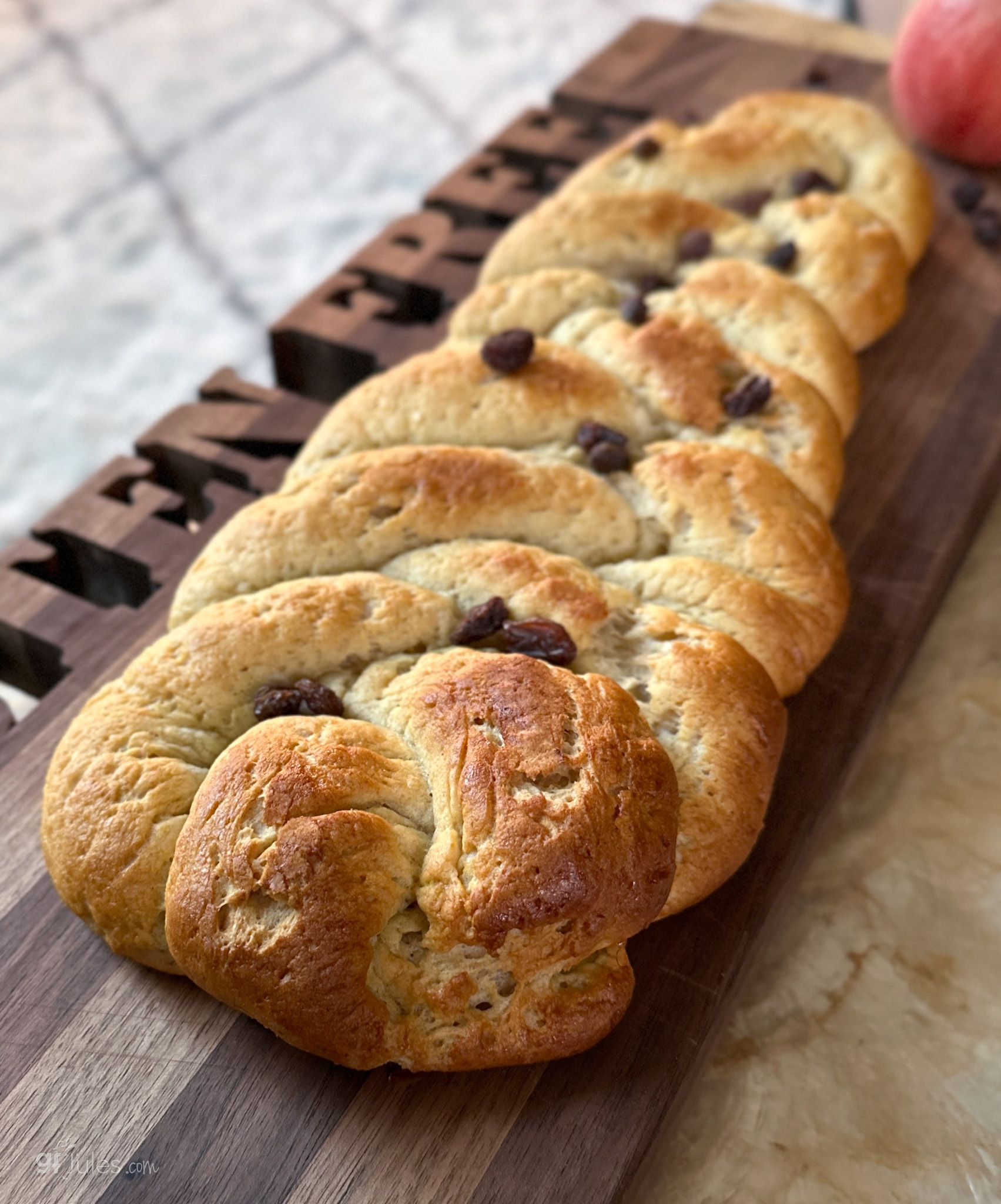
Gluten Free Challah from gfJules Bread Mix
Ingredients
- 1 gfJules Gluten Free Bread Mix
- 1 quick rise yeast packet
- 4 Tbs. 56 grams granulated sugar
- 3/4 cup water
- 3/4 cup yogurt of choice not Greek style, room temperature (I like vanilla flavor)
- 1 tsp. apple cider vinegar
- 4 large egg yolks slightly mixed*, room temperature
- 1/4 cup mild oil like sunflower safflower, non-GMO canola, avocado, etc.
- 4 Tbs. honey OR agave or maple syrup
Toppings
- 1 large egg mixed with 1 Tbs. water or milk
- poppy seeds sesame seeds, raisins, diced apples, etc. (optional)
Instructions
- Preheat your oven to 200º F, then turn it off. Prepare a baking sheet by lining it with parchment paper.
- Bring all ingredients to room temperature. In the bowl of a stand mixer (recommended)**, add the wet ingredients (water, yogurt, cider vinegar, egg yolks, oil, honey) and mix until combined.
- Gradually stir the gfJules Bread MIx + yeast packet into the wet until fully integrated.
- Mix 1-2 minutes more on medium speed to ensure all ingredients are fully incorporated.
- Once the dough is combined, divide it in half and divide each half into three equal-sized balls (6 balls total). Roll each ball out into an 18-inch coil or log on a clean, flat surface dusted very lightly with gfJules All Purpose Flour.
- Pinch together one end of each coil, scoring and wetting them slightly with water to help them join together at the top, then braid them, finishing by connecting them at the other end.
- Gently transfer braid to the parchment-lined baking sheet. Repeat for the second set of three balls. You may divide the dough into as many balls as you like, counting on at least 3 balls per loaf. Roll each to equal lengths of coil and braid into 1 or more loaves.
- In a small bowl, mix the extra egg together with a tablespoon of water or milk and brush over each loaf well, coating the entire top surface. Sprinkle the fruit or any toppings at this point, then place the tray (covering the loaves with wax paper or parchment sprayed with cooking oil) in a warm location for 30 minutes.
- Once risen at least slightly, place the uncovered tray in an oven preheated to 350º F (static) or 325º F (convection) for 20 minutes (less time for smaller loaves). A toothpick inserted into the center of the bread should come out dry or with dry crumbs when done.
- (Optional: instead of baking right away after rising, brush again with egg wash or spritz with water and cover loosely with plastic wrap. Refrigerate overnight. Remove to the counter while pre-heating your oven. Remove plastic wrap and bake as directed.)
- Remove to cool on a wire rack.
Notes
** Please keep in mind that nutrition information provided is per serving, which may vary. While we have taken care to provide you with the most accurate nutritional values possible, please note that this information may differ significantly depending on the exact ingredients and brands that you choose to use to make this recipe. Additionally, where options are given for ingredients, the resulting calculation may include all ingredient options instead of only one per line, skewing the totals significantly.
Don’t wait for the next special occasion to bake this incredible gluten free challah bread!
I hope you love this recipe as much as we do!
Pin for later!
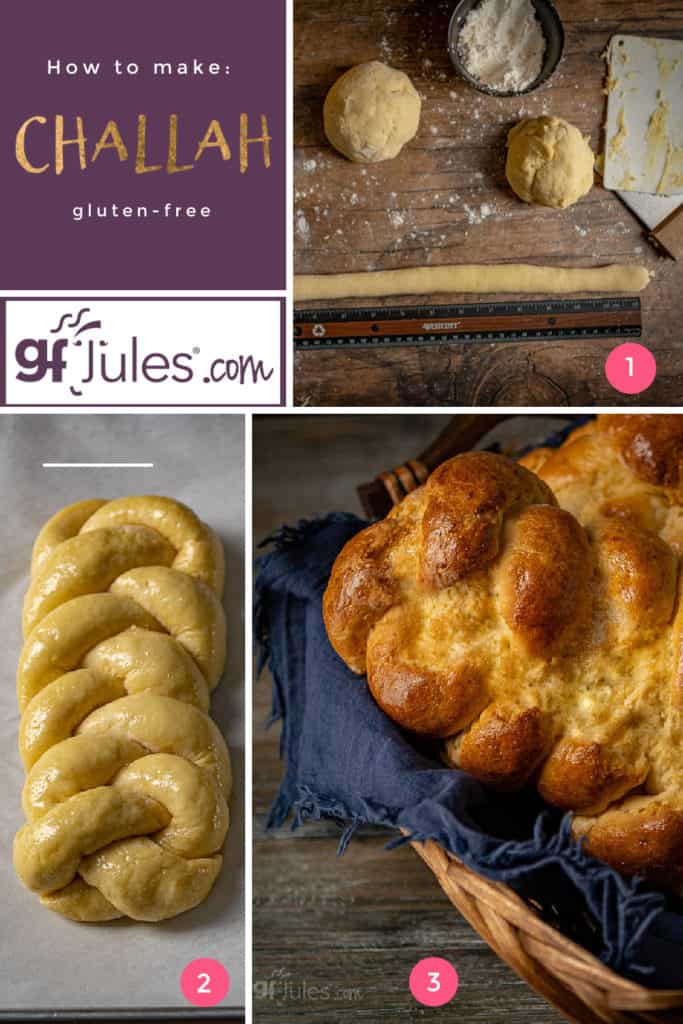
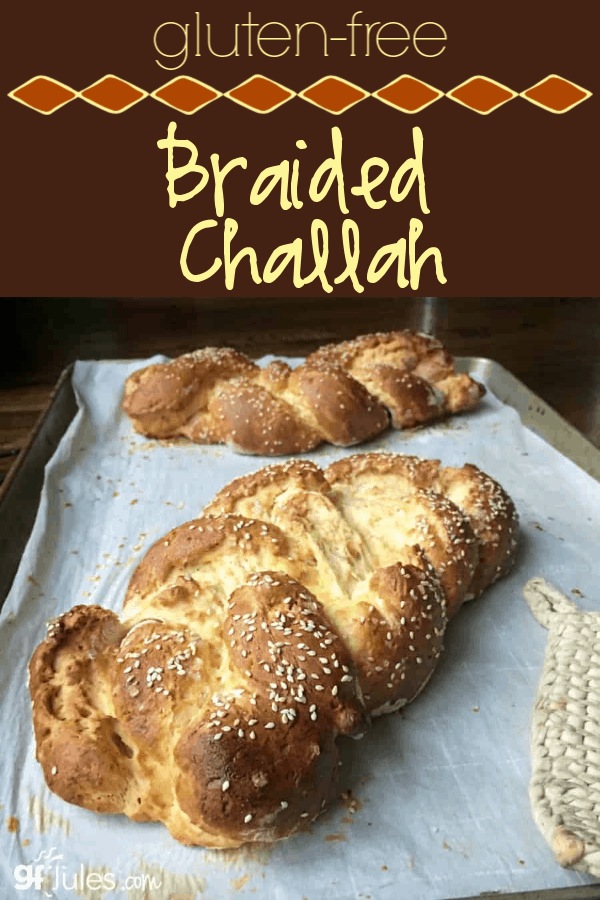
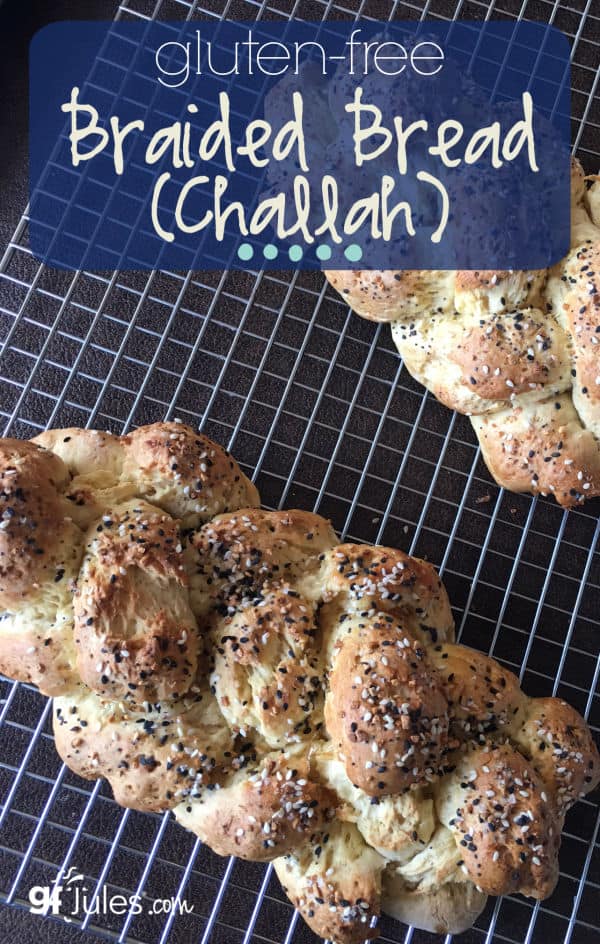




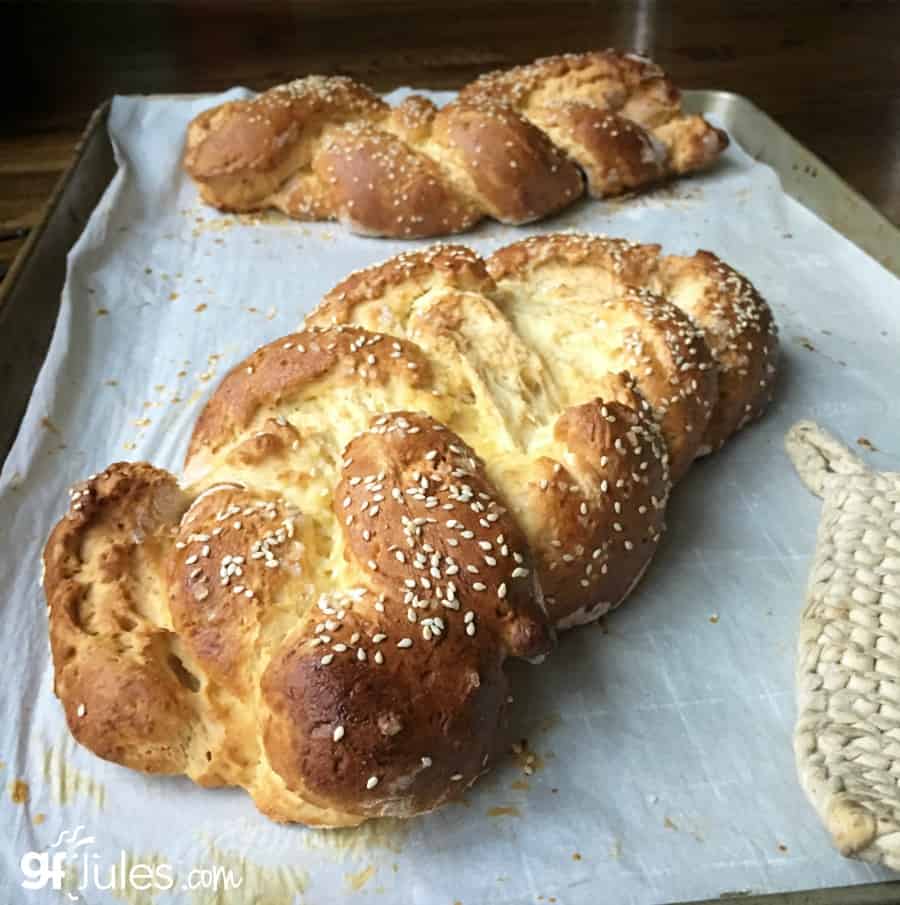











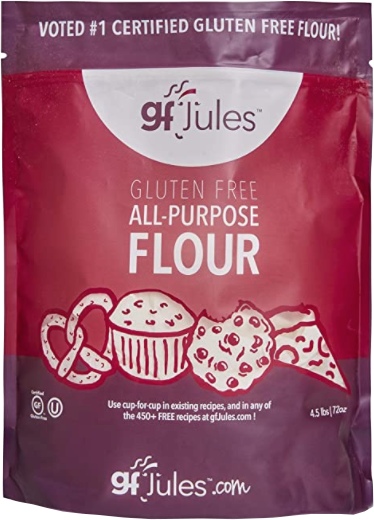
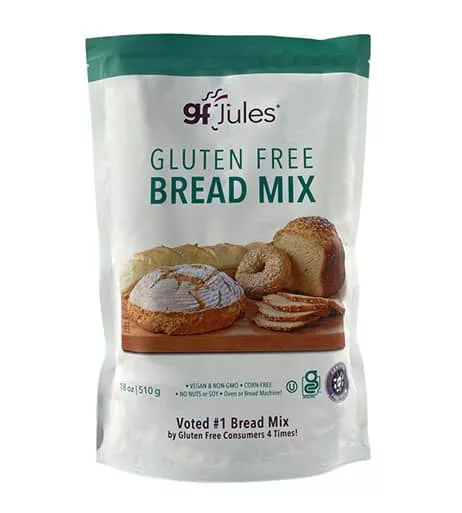
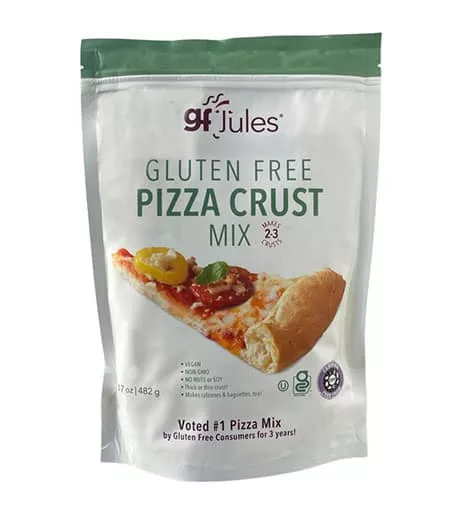
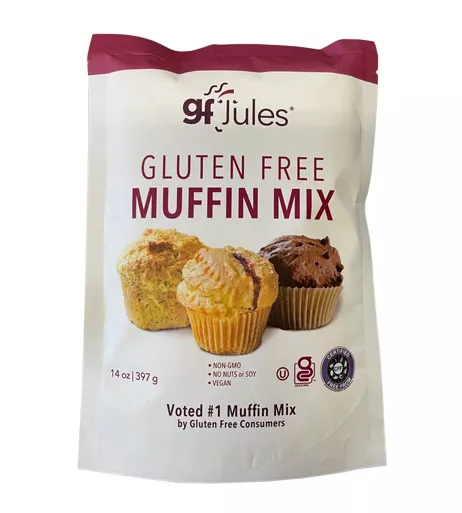


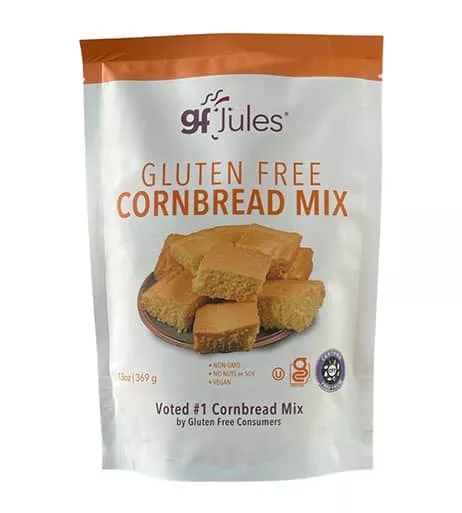



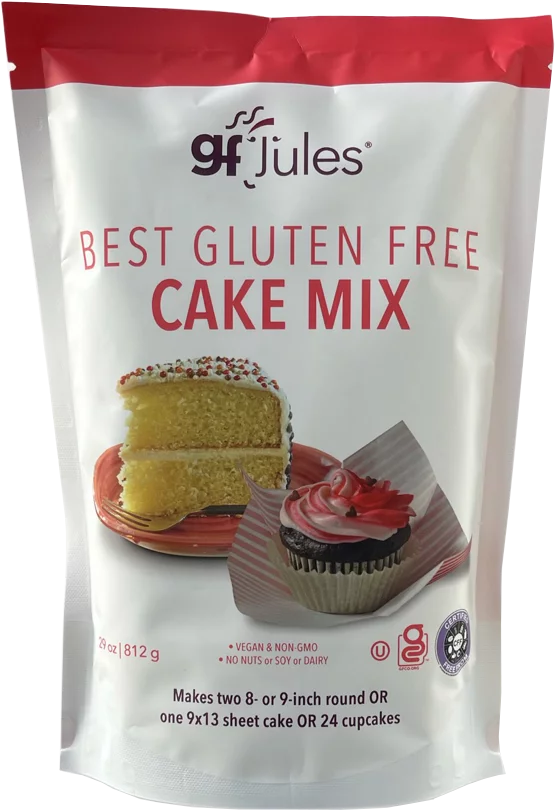
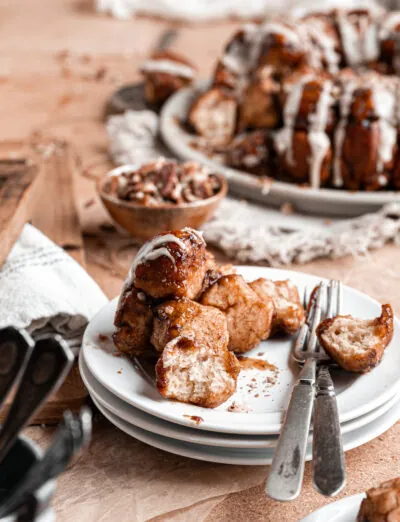

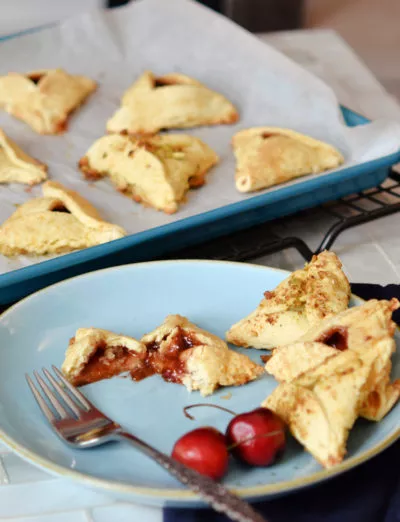
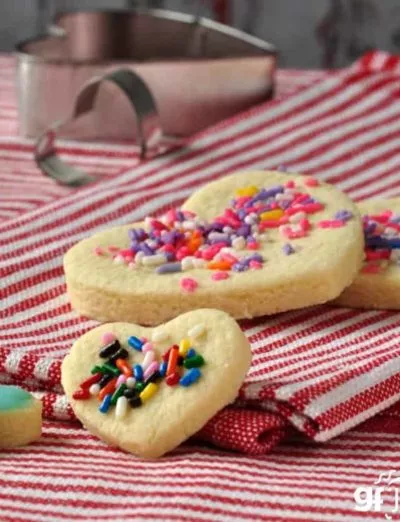


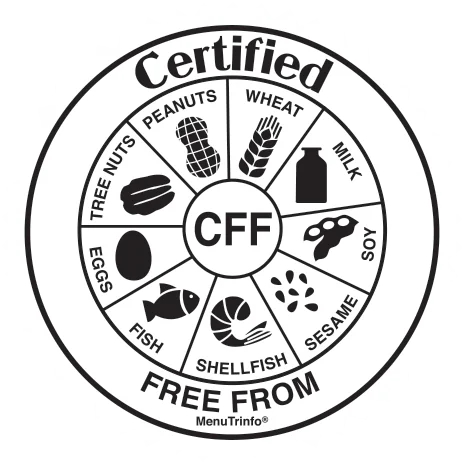
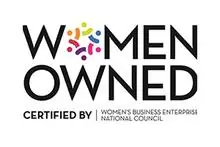
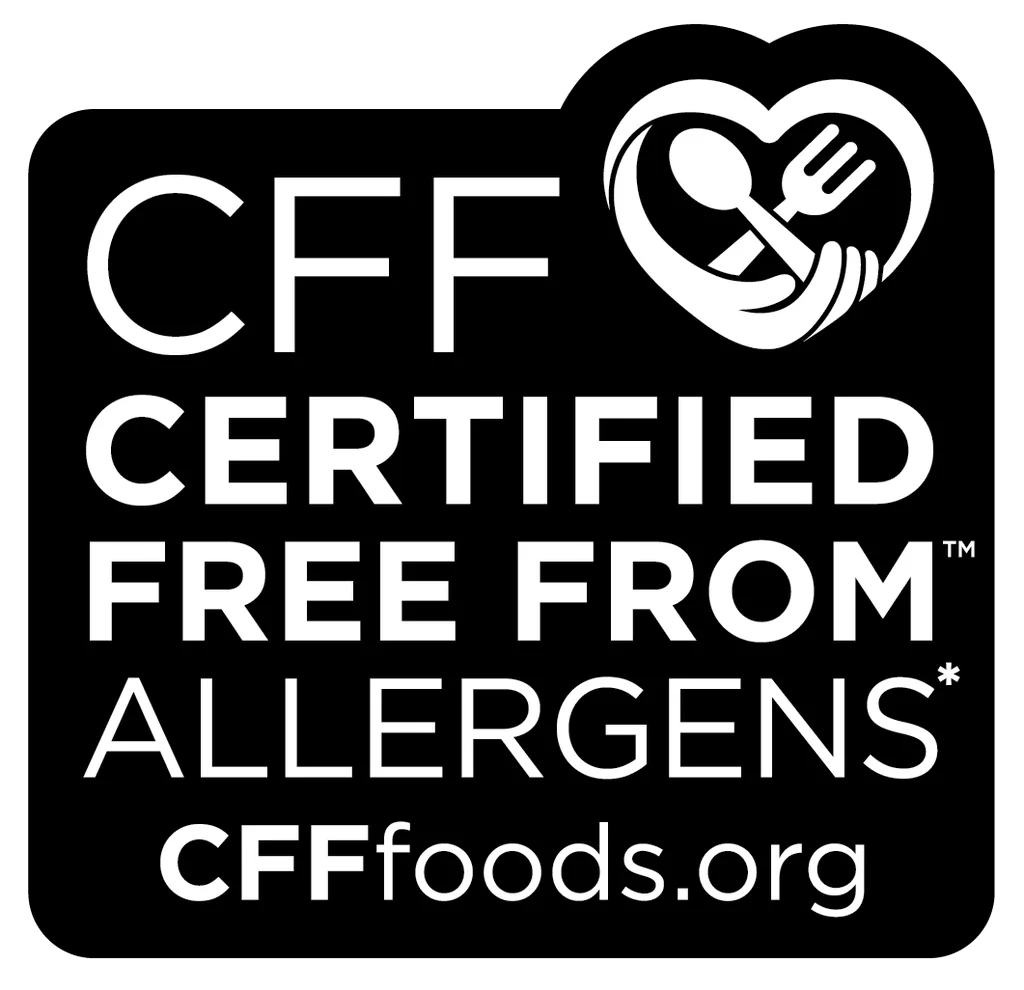
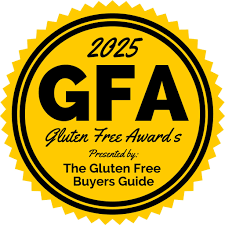
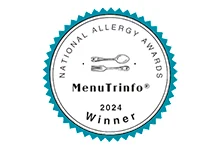
I have made this recipe before and LOVED it. Would fat free plain Greek yogurt work instead of vanilla yogurt? I wasn’t sure if the fat and flavor were part of the magic! Trying to make it a little bit Weight Watchers friendly 🙂
Hi Jenny, I’m so happy to hear you have loved this recipe. It’s so important to me to get a gluten free challah recipe RIGHT! As for fat free Greek yogurt, it’s worth a shot. I haven’t tried it myself, but since you’ve made the challah recipe before, it would be easier for you to try it with that substitution and have a better feel for the dough and whether it was working well or not before you tried to braid it. Greek yogurt will likely require the addition of a splash or two of your favorite milk to the dough because it’s not as “thin” as regular yogurt, so keep that in mind as you go, but the lack of fat shouldn’t ruin the bread. The flavor will be different, mind you, but if you’re willing to sacrifice some in that department, then give it a go. Just please do come back here and tell me how it turned out!!! 🙂
~julees
I’ve used Greek yogurt before and the dough does come out thicker. Now, if that’s all I have, I’ll use 2/3 cup Greek yogurt and 1/3 cup water and it works really well.
Yes! That’s absolutely the thing to do. Greek yogurt is quite a bit thicker than American yogurt, so adjustments will often need to be made when baking. So glad you figured it out for this gluten free challah recipe, Arzelie!
~jules
hi, Jules, I love to bake and I use a lot of your recipe’s I don’t use your flour tho just thanks, and here is a small tip on bread you probably already know this but Stevia would not work sugar is what gives it a spongy flavor so don’t cut it
Hi Julia, so glad you are loving my recipes and they are useful to you and your passion for baking! Thanks for chiming in with any baking tips — love to have them. Baking is all about sharing!
~jules
This is the best gf challah I have ever made! Thank you so much for your detailed description of the dough consistency. We were always working it to much and ending up with stuff dough. This was perfect! The dough had the consistency of sugar cookie dough. It was a little fragile, but workable. We made it with cinnamon sugar and it is delicious!
Oh Cheryl that makes me so happy to hear! It’s so difficult to describe but I’m thrilled that it turned out and that my description did the trick! The cinnamon-sugar sounds divine! I’m going to be making more this weekend – I may have to make it with that twist this time instead!!! Thanks again so much for taking the time to let me know how it turned out for you! Happy Holidays and Happy baking!
~jules
I have lactose intolerance and my husband doesn’t like anything with coconut.
What can I use instead of the yogurts?
Can I substitute water?
Hi Adele, I would first recommend another non-dairy yogurt like Almond or Soy or lactose-free yogurt. Other than that, I would choose a non-dairy milk before I would use water in this recipe. Hope that helps!
~jules
Hello!! Love your recipe but can you replace sugar for stevia??
Hi Denise, so glad you love my recipe — that’s great to hear! Regarding the sugar, yes you can absolutely sub baking stevia for sugar here. Enjoy!
~jules
If I don’t have any yogurt, can I sub with something else?
Do you have sour cream? That’s a great sub or you could use milk, but it will not be an equal exchange and the dough will be too wet to braid. I haven’t made this recipe yet just using milk so I can’t tell you exactly what to do, but I would expect that you will need to use a bit less milk; I would be going by feel though, having made the dough so many times myself. You could try it with full fat coconut milk (shaken), cream or half and half as a 1:1 and you still might not be able to braid it but it would be a closer substitute. I hope one of those will work for what you have on hand.
~jules
This was good, but the dough fell apart and I couldn’t roll it like you do on your video. Also, it was pretty dense. Thoughts on where I went wrong? I let it rise for 32 minutes total. It seemed to need to cook more as well. So maybe slightly under done bread is more dense? Seeking advice on yeast doughs. Thanks.
Hi Jayne, I’m glad you still found the recipe to be good, even though it wasn’t able to be rolled. If the dough was dense and not able to be rolled though, it sounds like there wasn’t enough liquid in the recipe, or conversely, too much flour. That’s the one thing I’ve found with this recipe and it gets better the more times you make it because you get used to the way the dough is supposed to be and can adjust if it’s not quite right. There can be a tightness to it — I try to describe it as taffy-like in the recipe — if the proportions are off a bit in measuring. That is just enough to make it not work in braiding and a bit dense when baked. As you get used to working with the dough (after making the recipe a few times) you get a sense for what the dough should be like and you can adjust accordingly by adding a bit more liquid before working with it and finding that it’s not going to be able to be braided. That’s a clue as well that it will bake up too dense and also that it will need more time to cook because the dough is too “tight.” It’s difficult to describe and this is the one recipe I’ve found that it really does take a few times of trial for most of us to get good at it.
Here’s a general article about gluten free yeast doughs that might help since you asked about that, as well. And also check this recipe for tips on measuring flour the best way, in case that is something that might have affected the recipe this first time for you.
As I said though, the fact that it was still good despite the fact that you couldn’t roll it and it was dense, is still saying something! I hope you do try it again with these tips in mind and that you experience more success! Keep me posted!!!
~jules
I love this recipe I am wondering if I will be able to make it for someone who is allergic to eggs is there anyway to replace them?
Hi Lisa, I’m so happy to hear you love this recipe, too! It’s a hard one to contemplate replacing eggs, as there are 5 egg yolks, but take a look at my article on vegan egg replacers. I would look to a mixture of egg replacements and perhaps treat the eggs like 3 whole eggs instead. Maybe try two recipes of flax egg and one recipe of a commercial egg sub? Start with something like that and see how it goes. It won’t be the same, but hopefully you can get a worthwhile reproduction!
~jules
This recipe is amazing. Thank you! Not only does it have the same taste as my gluten based Challah, but I can BRAID it, and that is part of tradition for me.
Amy idea why it splits when baking though? I’ll take taste over looks, but if it can look good too…
That makes me SO very happy to hear! I’m thrilled that you have truly delicious REAL gluten free challah — braidable gluten free challah — in your life! Regarding the splitting, you can try a couple things. It’s more related to the rapidity of rising, I’ve found, so you can switch to regular active rise yeast instead of rapid rise yeast, and you can slow the rise down to rise overnight in the refrigerator or in a cool place, rising more slowly. That would be one thing to try the next time you make gluten free challah and have a bit more time on your hands. I also use raisins to my advantage where there are larger splits :).
Happy baking!
~jules
Planning on making this today 🙂 I have my Jules gf flour ready to go. Two questions- When it says to turn on the oven to 200 and then turn it off- what step do I use the warmed oven?
I only have active dry yeast even though the recipe calls for rapid. What adjustments do I need to make?
Thanks!
Scratch the question about yeast- I see it answered below 🙂
Follow up: I made it and it was awesome!!!! I can’t wait to make this next Shabbat! I’ve been gluten free since 1990 and had yet to find a good challah recipe, so thank you!
WONDERFUL to hear, Jenny! I’m so excited for you! Congratulations on having REAL challah back in your life!!!!! Thanks so much for taking the time to come back and let me know!
~jules
Hi Jenny, the warmed oven is for the rising part. So, turn the oven on to 200F and when it’s come to temp, turn it off and put the bread into the oven to rise in the warmed — but turned off — oven. If your kitchen is already warm or you have another warm place to rise the gluten free challah, you don’t have to follow this step. Hope that makes it more clear!
~jules
With yeast at a premium I need to use what I have on hand – fleischmann’s active dry yeast. Any suggestions to accommodate for using that instead of rapid rise?
Hi Alison, yes I totally get it. Take a look at my article on yeasts and how to use active dry in place of rapid rise. Enjoy the recipe!
~jules
I’m hoping to make my first gf challah soon. Ordered your flour on line as I have heard it is the best. I don’t have a standing mixer and have also made my regular challah by hand. Can I do this with your recipe? Due to the scarcity of yeast at this time, I could only find saf-instant yeast and wonder if I can use this?
I have all the other ingredients.
Please advise. Thank you so much.
Hi Helen, I’m so glad to know that others are recommending my gfJules Flour to you as the best, especially for gluten free challah! I certainly believe it is, and have heard from so many people who had previously given up on ever making real challah (and braiding it!) again until they’d tried it with my flour, so I know that it has meant so much to so many who have been successful with it in their gluten free challah making.
Back to your questions though: you may make this dough by hand, but be careful not to over-work it. Having made traditional gluten challah by hand, I’m certain that there was a great deal of kneading that you were doing. Resist the urge! Simply mix the dough until it is mixed and then follow the instructions I give for how much more to integrate the yeast. Remember that the mixing comes first, then the braiding, then the rising, so leave room when braiding for the rise to occur after braiding. And the SAF instant yeast will work for you, yes.
Happy Challah Making!
~jules
Thanks for your response. Happy to say that the challahs came out great and my daughter was thrilled. Her family who are not gf loved it as well. Hoping to try some other gf treats soon. Thank you!,,
So wonderful to hear, Helen! Thanks so much for letting me know! Happy baking!
~jules
Is there a reason not to use butter? If butter works, how much in place of the oil? (Since there’s already yogurt in, it’s OT to avoid dairy)
Not to avoid dairy
I don’t have yogurt on hand and want to try this recipe. Any other ways to make it?
Could I use coconut sugar or a different sugar substitute?
Hi Gabrielle, coconut sugar will work just fine in this recipe! Enjoy!
~jules
I made this dough and used a scale to measure the flour. It came out WAY too wet! There was absolutely no way we would be able to roll out the dough.
I used Bob’s Red Mill 1 to 1 Baking Flour, which has the following ingredients. Sweet White Rice Flour, Brown Rice Flour, Potato Starch, Sorghum Flour, Tapioca Flour, Xantham Gum. I compared this to your gfJules blend and it is very similar (not sure about proportions though).
We added some extra flour and that didn’t even work! Does anyone else have this problem? How do I make this dough workable?
Hi Ben, I understand why it would look like Bob’s Red Mill flour is similar to my gfJules Flour blend from the label, but it’s actually quite different. This article will explain more about the particulars about why all gluten free flours are so very different from one another and why it’s hard to substitute one for another. You’ve seen first-hand what a difference it makes to try to use a different blend when one is specified. I hope you get a chance to try my gfJules Flour in this recipe so you know just how wonderful this gluten free challah is and how easy it is to braid this dough with the right gluten free flour. It’s pretty incredible!
~jules
Any way to add oat flour to make this hamotzi?
Hi Melissa, yes, just sub the smallest amount of gluten free oat flour for that same portion of gfJules Flour so that you can meet the requirements.
~jules
Do you have a vegan recipe to go with your flour blend?
Hi Valerie, most of my recipes are either vegan or can be made vegan, but this recipe is for egg bread, so I don’t recommend using an egg substitute. If you really want to try it though, check out my article on vegan baking substitutes and select a couple to blend together as a sub in this recipe, such as vegan mayo. Let me know how it goes!
~jules
Can I make this in a bread maker as a loaf?
Hi Rose, you may, but it won’t be braided, of course. Make sure your bread machine can bake a 3 pound loaf or set at the largest size setting and read these tips for gluten free baking in a bread machine. Enjoy!
~jules
Super dense and crumbly. Also the South was very wet and sticky.
Hi Haley, not sure what you’re talking about exactly. Can you explain – “the South?”? And I’m assuming you were using something other than my gfJules Flour? It’s pretty critical to use my flour in recipes like this so that it WON’T turn out dense and crumbly. Here’s a link to an article on gluten free flours so that you can see the differences and why WHICH flours you use makes such a difference!
~jules
is there something I can use in place of the yogurt. Would like to make the challah but am quarantined at home and dont have any 🙂
Hi Gisele, you could use sour cream if you have it or you could use milk but the texture will be somewhat different and you’ll need to use less. If using milk, I would add milk until the dough gets to the texture where it’s not dry and it’s braidable but not tight or too sticky. I’ve not made it with milk yet, or I’d be able to tell you exactly how much to add. Sour cream should be close to the same measurement. I hope one of those works for you during quarantine!
~jules